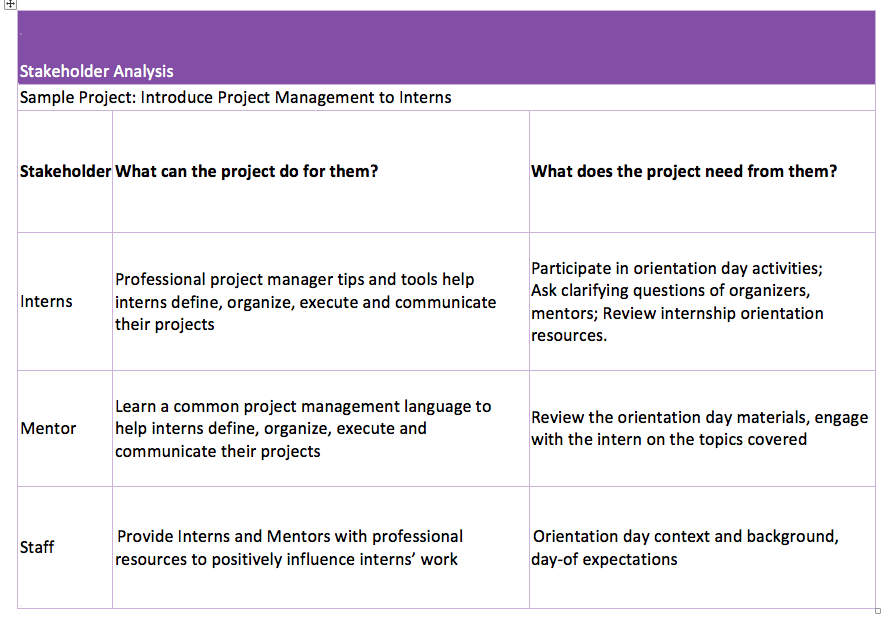|
We believe we can do better together; it’s one of our values. But we also know that teams can struggle to get work done together.
Teamwork sounds good in theory. The more, the merrier, right? And yet, when it comes to accomplishing tasks, it often seems easier to do it alone. The problem is that teams often neglect to clarify and define roles, ensuring that their work is an uphill (or circular!) battle. Without clear roles and communication, a project slows. A lack of clarity creates redundancies and conflict; it encourages passive-aggressive behavior and wastes time. To set the stage for a successful project, you first need to be clear on roles. To do this, answer two basic questions: what and who. A team needs to understand what skills are needed and who brings them: Who needs to provide input or make recommendations? Who is authorized to make decisions? Who is responsible for carrying those decisions out? Understanding the answers to these questions will eliminate unnecessary frustration, friction, and unproductive competition between members of a team. If your role or somebody else’s role isn’t clear to you, it’s not clear to others. As global business consultant Tamara Erikson wrote in the Harvard Business Review: “Collaboration improves when the roles of individual team members are clearly defined and well understood.” Here’s how to do it: What Is a Role? A role is the part or position a team member plays in a particular operation or process. Some roles are formal; many are not. Formal roles include those whose name or title describes “what” they’re responsible for. For example, a project manager or a writer may fall into this category. Teams often have people who do not have formal titles but have skills, experience, or knowledge that contribute to the outcome of our projects. Naming these roles can become complex and yet, it’s necessary or people will fill default roles. Unless they’re told otherwise, people will assume a role because of interests, skills, personality type, motivations, or attitude. An extrovert may become the team’s catalyst to propel a team with energy and positivity, while someone with high analytical skill will provide insights and check possibilities against realities. These are the realities that make teams valuable. But be sure everyone understands “who” needs to do and know “what.” Tools for Defining Roles Our top tool for defining roles is a RACI chart. While organizational charts show hierarchies and decision-makers, a RACI chart shows roles so much better. It’s a valuable tool when working with clients, vendors, in coalitions, or when volunteering on a board. A RACI chart is a matrix that assigns roles and responsibilities in categories of tasks. This sets expectations for people working together. To make a RACI chart, begin by creating a row of team members across the top. List all needed tasks, milestones, or decisions on the left side. Now indicate who is responsible, accountable, consulted, and informed in the intersecting cells.
Many examples of this tool exist online. One of my favorites is this Lord of the Rings example (the article on RACI charts is great, too). If you are striving to empower others to get their work done, it may be a very helpful tool to use at the beginning of a project at work or as a volunteer. We find the best use is to create a RACI chart with the team. This allows the group to grow a deeper understanding of the project tasks. The more clearly understand who needs to complete a task, whose expertise is needed, and who has the final say on decisions. Like any tool, use it, manipulate, or modify in the way that works for your team. – Rachel
0 Comments
We’re going to let you in on a project management secret. The hardest part of any project isn’t achieving the actual outcomes – it’s managing the expectations and needs of the people who are involved. Surprised? Probably not. After all, if you’ve ever worked on a project, you know that one person can easily promote a plan – or derail it. That’s why identifying your stakeholders and determining how best to keep them informed is critical to the success of any project. Stakeholder analysis is a useful tool that helps you understand stakeholders’ expectations throughout the project lifecycle. Once you understand expectations, you can communicate in a way that creates enthusiasm, trust, and excitement. These are the emotional responses you need to build the good will that will help you usher a project to the finish line. As Mannon Deguire put it in “Greatness, A Place Beyond Stakeholders’ Expectations:” “Projects are about hope. They need to be exciting because it is the excitement that energizes the system and gives us the energy to do the work and spend the time and money to accomplish a project.” So, how do you start? First, take a moment to write down everyone who is a potential stakeholder. Then take time to answer these questions for each stakeholder category:
Once you’ve completed the analysis, you’ll be able to build a plan for communication or stakeholder engagement. The plan can include key messages for each stakeholder or stakeholder group and additional details, such as the way those messages will be delivered (email, meeting, report, or phone call) and how often (weekly, daily, or project start and end).
Experience has taught us that projects are about communication, communication and communication. As long as you can inform your stakeholders in a timely, appropriate manner, they’ll remain happy and your project is likely to succeed. - Rachel |
Reach PartnersYour partners in leadership. Categories
All
Archives
July 2024
|
|
|
Reach Partners, Inc
3330 Fiechtner Dr. Suite 100 Fargo, ND 58103-2321 701-271-8170 Copyright (C) 2024 Reach Partners Inc.
|



